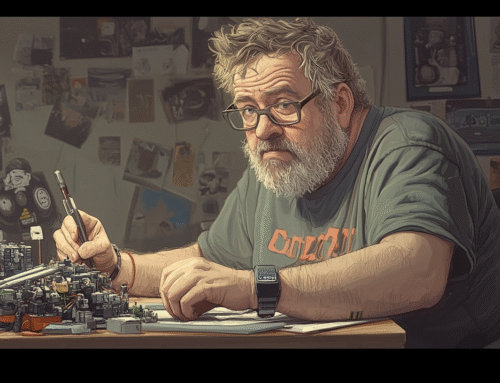If you’ve ever felt like you’re not making progress in your business or creative work, despite all the books, videos, and strategies you’ve consumed—this post is for you.
You’re not alone. Many solopreneurs feel stuck. One day it’s webinars, the next it’s content creation, then it’s paid ads, then back to SEO. The constant cycle of new strategies gives the illusion of productivity, but often leads nowhere.
The truth is: speed comes from commitment, not constant change.
Here’s how I used GPT-based systems to cut through the noise, build real momentum, and progress way faster than most—all without burning out or chasing shiny objects.
The Mountain Analogy (Why Most People Get Stuck)
Picture a mountain. Your goal is the summit: success on your own terms.
There are many paths up that mountain. Some are straight and steep. Others are winding and scenic. Some look easy from the bottom but take forever. Others look intimidating but get you there faster.
Most people spend their time jumping from one path to another. Every switch brings them back to the base. They’re in constant restart mode.
Real progress happens when you commit to a sensible path and climb through the hard parts.
What GPT Systems Unlock
The biggest challenge isn’t knowing what to do. It’s doing it consistently and knowing how to improve as you go.
I created a workflow using custom GPT systems that helped me:
- Stay focused on one clear message
- Turn ideas into content quickly
- Publish consistently in multiple formats
- Get feedback fast and adjust without overhauling everything
Let’s break down the core components of the system:
1. The GPT Stack System
Most people use ChatGPT like a digital assistant. I use it like a full creative team.
The GPT Stack System involves multiple AI tools working in sequence:
- GPT 1: Brainstorm headlines and hooks
- GPT 2: Outline blog or video structure
- GPT 3: Write scripts or blog drafts
- GPT 4: Repurpose into short tweets or content clips
This transforms one idea into multiple assets with less friction and more consistency. And because it’s modular, you can improve one layer without redoing the whole thing.
2. Execution Over Planning
It’s tempting to believe success depends on finding the perfect plan.
But the truth? Most decent strategies work if you stick to them long enough.
Don’t switch paths at the first sign of struggle. That’s where breakthroughs happen.
I call this the “Fallacy of the Perfect Pick” — the idea that there’s a perfect strategy out there waiting to be found.
But execution always beats indecision. You don’t need more information. You need more implementation.
3. The Power of Repetition and Refinement
One of the most powerful mindsets you can adopt is:
“I’m willing to be bad at this long enough to get good.”
GPT systems give you a frictionless way to repeat and refine:
- Draft quickly
- Get feedback from real-world data
- Improve based on what resonates
You don’t need to get it perfect. You just need to get it published.
4. Consistency as Culture
Whether you’re solo or have a small team, consistency is a cultural decision. It is also built into your daily systems.
Ask yourself:
- What behaviours get rewarded in your work?
- What behaviours get ignored or punished?
If you reward starting over and new plans, you’ll keep restarting. If you reward consistency, iteration, and data-driven action, you’ll keep improving.
Build your workflow around reinforcement:
- Track what gets done
- Celebrate consistency
- Course-correct without scrapping everything
5. Daily Flow to Build Momentum
Here’s the daily routine that keeps the engine running:
- Choose one idea or insight
- Run it through the GPT Stack
- Publish in 2-3 formats (blog, video, tweet)
- Observe feedback (likes, views, replies, etc.)
- Adjust tomorrow’s execution based on that
Do this for 30 days and you’ll be shocked at how much progress you make.
Final Thought: Don’t Switch. Sharpen.
If you’re feeling stuck, the answer probably isn’t another strategy. It’s deeper execution on the one you already believe in.
GPT systems help you:
- Stay consistent
- Move faster
- Remove bottlenecks
- Learn from the field, not from theory
You don’t need to reinvent yourself. You need to build the muscle of consistent output.
You can climb the mountain. Just stop switching paths. And start sharpening your knife.
To help in the process of improving your existing systems, I have developed a GPT called Sys-Sensei GPT that will offer you ways to improve your Standard Operating Procedure if you input your existing system. I will release it shortly, so be sure to look out for that.






